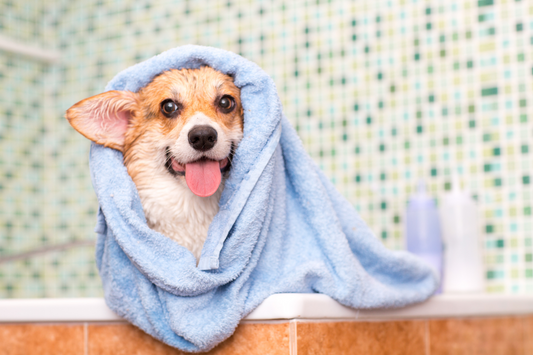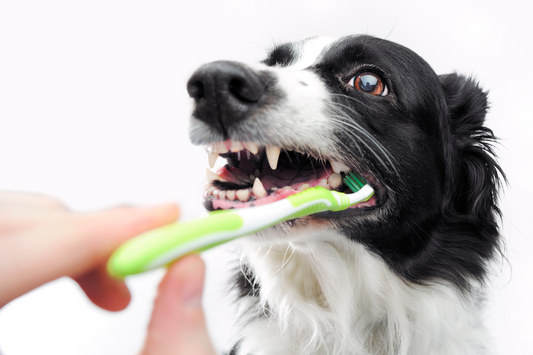Have you ever checked the labels of a cat food and wondered “Am I giving the best to my cat?”
In a purrfect world, choosing the best cat food is synonymous to knowing immediately the right pick for your cats. In reality, one of the biggest challenges of feline care is finding the best cat food that matches your cat’s needs, age, and preferences.
Caring for your cat entails various essentials like a holistic environment, exercise, and regular vet visits. But experts and researchers believe that choosing the best food for your cat is of utmost importance.
If the different types of cat food already make your head spin, we got your back. In this guide, we will help you explore the cat food varieties so you can tell which is the best for your furball.
Dog Food Vs. Cat Food
“I’m caring for both dogs and cats. Can they just share their food?”
Quick answer: If just for a few times and in small quantities, the answer is yes. If done in the long run, your cat may suffer significant health consequences.
Cats - unlike dogs which are omnivores - are obligate carnivores. This classification means they need more meat-based protein and animal fat to enable their systems to function properly. The typical dog food is made of a combination of carbs, vegetables, and meat that aren’t enough to satisfy the nutritional needs of felines.
Let’s take protein for example. The recommended “as fed” protein percentage for cats is between 30-34%. Dog food only has an 18-24% “as fed” protein content. Other essential nutrients necessary for your cat’s growth such as taurine, Vitamin A, and arachidonic acid can be missing in most dog treats.
There’s a high chance that your cat won’t also be a fan of your puppy’s munchies. Cats only have 470 taste buds - a regular dog food won’t be appetizing enough for your kitties.
Things to Remember When Buying Cat Food
Buying the best type of cat food for your pet may seem like a challenge (it will require you to search high and low) but it should not always be difficult. As advocates of providing the cats with the best food, we are sharing some tips to remember when buying cat food for your beloved furballs.First - check the protein content!
Protein is a number one consideration when it comes to choosing the best food for cats.
As meat eating specialists, cats need protein for energy, for growth, and for fueling bodily processes. Due to a strictly carnivorous diet, it is recommended by experts that cats get an appropriate portion of protein and amino acids in every meal.
Protein benefits for cats include building and repairing certain body parts like nails, claws and muscles, and boosting their immune system. Animal protein is also a great source of two other components for optimal cat growth - taurine and arachidonic acids.
A lack of protein can result in poor growth, low weight, lethargic movement, and becoming susceptible to diseases and illnesses.
When finding must-buy feeds for cats, check its protein content. Choose a cat food with protein content that is around 70-75%.
Second - Choosing Between Dry and Wet Food
Should you only choose one? The choice between dry and wet cat food depends on several factors including budget, cat diet, and your cat’s current health conditions
Perks of Buying Wet Cat Food
Wet cat food contains 70% more moisture compared to its dry counterpart. The higher water content can be beneficial for cats with health issues that call for more water intake such as diabetes, lower urinary tract infection, and kidney problems.
If you’re looking for pure protein cat food, the wet version is where you can find them.
Wet Cat Food Disadvantages
Price is a dealbreaker for most furparents, and wet cat food most often come with an expensive price tag. The stress of ensuring cat food is properly stored (away from direct sunlight, lessen exposure once opened) is also something to consider.
Perks of Buying Dry Cat Food
Cat moms and dads on a budget can count on dry cat food to sustain their furbabies’ growth and immunity. Another dry cat food benefit is that your pet can get a complex serving of carbohydrates, vitamins, and probiotics.
Storing dry cat food is also easier. If you’re used to free-feeding your pets, or if you use an automatic pet feeder, dry cat food comes in handy.
Dry Cat Food Disadvantages
Obesity among cats is often attributed to dry cat food. If you’re using this variety, you need to take an extra step of monitoring and measuring the amount your pet eats every day.
Combining Both Dry Cat Food and Wet Cat Food
Providing both wet and dry cat food to your pets allows them to enjoy the best of both varieties. Always check with a veterinarian to ensure you give your cats a well-balanced diet.
What We Recommend:

Vigor and Sage Ginseng Well-Being
Dry cat food includes fresh chicken and ginseng, which helps boost the immune system, supporting physical and mental well-being.
Buying Cat Food Based on Life Stages
A cat’s life stage is one of the most reliable factors to consider when buying cat food. Nutritional levels vary every life stage so it is critical to find food that matches her metabolic rate, energy levels, growth, and health.
There are three stages in a cat’s life - the kitten stage, the adult phase, and the geriatric period. Choosing the best food for your cats can keep them thriving whether they’re young, or simply young at heart.
Kitten Stage
In the first 8 weeks of a kitten’s life, she will be solely dependent on mom’s milk. After she’s weaned on the 9th week, pet owners should take cues from her energy levels in order to find the proper nutrients that complement her boundless zest.
Your kitten’s 9th week (and onwards) is equivalent to a human being’s first ten years - they are growing incredibly fast. To keep up with their growth, go for cat food containing protein for muscle building, and growth-promoting components such as DHA, taurine folic acid, and amino acid that supports digestive, vision, and heart functions.
What We Recommend:

Formulated with respect for the natural composition of the feline diet. The recipe is based on salmon and turkey, sources of essential amino acids, which in combination with forest fruits, vegetables, and herbs provide essential nutrients, vitamins, minerals, and antioxidants every day for proper development of the skeleton, muscles, and natural immunity.
Adult Stage Cat Food
After the one year mark, you will begin to notice an increase in food demands from your cat. This change happens because your pet is entering adulthood and entering a phase where their activity levels double.
At this stage, check for cat food with a significant amount of animal protein and taurine. Consider amping up the servings if your little furball runs the house down. For those cats who love to laze away, monitoring their food intake is top priority.

Senior Stage Cat Food
When your cat reaches the golden years, her decline in activities entails diet changes such as lowering fat, calories, and fibers. Senior cat food diet needs more taurine, a nutrient that strengthens the heart. Incorporating cat food for senior cats that antioxidants can help your elderly pets navigate getting old a little better.
The best way to care for your cat begins with knowing the right food to give them. When they’re fed right, and when they get the most adequate nutrients for every life stage, they can reach peak growth. MogandMarley is an advocate of better nutrition for both dogs and cats. We believe that the best life is one filled with delicious, nutritious food.
Check out our website for more healthy pet food choices!




